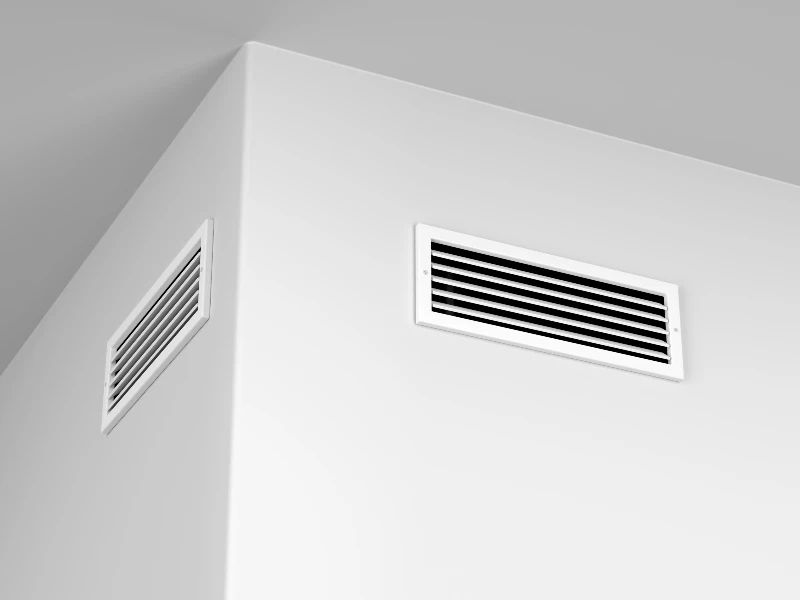Signs that you may have black mold in your air vents in HAVC units or heating or cooling systems include a musty smell coming from the area, visible black spots and patches of discoloration around the vents, visible mold inside the air handler unit, and high moisture but poor air circulation in your room.
Other signs of black mold in your air vents are health problems it caused. If you stay in a room with black mold for a long time, you may experience unexplained allergy symptoms (such as sneezing, coughing, itchy eyes, skin itchiness, and difficulty breathing), unexplained persistent headaches, nausea or dizziness, fatigue, and other symptoms.
It is because the mold spores released by black mold can easily get into the air you breathe by air circulation, then causing these symptoms. Especially if you have a small space with poor ventilation.
Contents
- 1. Musty Smell
- 2. Visible Black Spots And Patches Of Discoloration Around The Air Vents
- 3. Visible Mold Inside The Air Handler Unit
- 4. High Moisture But Poor Air Circulation In Your Room
- 5. You Develop Unexplained and Unusual Allergy Symptoms
- 6. You Develop Frequent Unexplained Headaches
- 7. Fatigue
- Final Thought
1. Musty Smell
The first sign of a black mold problem is a musty smell coming from the air conditioning vents, especially when they’re turned on. The smell is usually strongest near the vents and can fill up the entire room. The smell comes from the mold spores being released into the air as they’re circulated throughout the room.
2. Visible Black Spots And Patches Of Discoloration Around The Air Vents
Another sign of black mold in your vents is visible black spots or patches of discoloration. You may find black dust around the air vents, as well as on the walls and ceiling near the vents. The mold can appear fuzzy or slimy and will be dark green or black in color.
3. Visible Mold Inside The Air Handler Unit
If the mold has spread inside the air handler unit, you may be able to see it by looking into the vents. The air handler unit is the main source of air supply and circulation in your home, so if there is mold growing inside, it will spread quickly throughout the house.
4. High Moisture But Poor Air Circulation In Your Room
High humidity levels but poor air circulation can also be a sign of black mold. Mold needs moisture to grow, so if the environment in your room is exceptionally moist, it is more likely for mold to develop in the air vents.
5. You Develop Unexplained and Unusual Allergy Symptoms
You may experience allergy symptoms such as sneezing, coughing, itchy eyes, skin itchiness, and difficulty breathing when exposed to black mold in your environment. Allergic reactions are caused by spores and other particles produced by black mold that enter your respiratory tract (nose, throat, and lungs) and then cause inflammation.
6. You Develop Frequent Unexplained Headaches
Frequent unknown headaches are the common symptoms of black mold in air vents. When exposed to mold spores in contaminated air, you may experience headaches due to mycotoxins (toxic substances).
The headaches may be accompanied by dizziness, nausea, or other symptoms of headache disorders such as migraines. This can leave people feeling drained and unable to focus on tasks throughout the day.
7. Fatigue
Fatigue is also a common symptom of inhaling air with black mold. People may experience fatigue and tiredness that cannot be attributed to lack of sleep or other illnesses, as a result of breathing in the toxic mold spores. This can lead to feelings of exhaustion throughout the day, leaving people feeling lethargic and unmotivated.
Final Thought
Black mold in air conditioner vents can have serious health implications. If you start to experience any of the symptoms listed above, it is important to get tested for black mold as soon as possible.
Even if your symptoms don’t seem too severe, black mold can cause long-term respiratory problems and other health issues if left untreated. Therefore, it is important to take action if you suspect black mold in your air vents, especially when you have these symptoms after moving to a new room.
